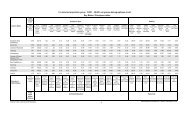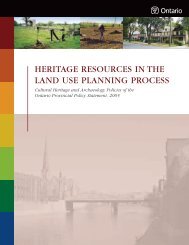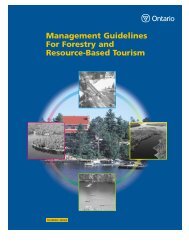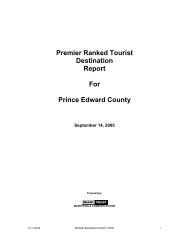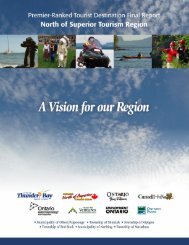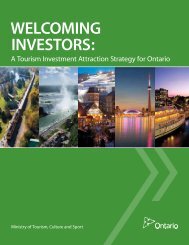Factors Influencing Visitor's Choices of Urban Destinations in North ...
Factors Influencing Visitor's Choices of Urban Destinations in North ...
Factors Influencing Visitor's Choices of Urban Destinations in North ...
Create successful ePaper yourself
Turn your PDF publications into a flip-book with our unique Google optimized e-Paper software.
easonable attraction types for Toronto and Ottawa to pursue <strong>in</strong> expand<strong>in</strong>g its attractionportfolio to enhance future visitations.E. Data CollectionThe data required for this study can be classified <strong>in</strong>to three categories: visitations data,attraction data, and non-attraction data.Visitations DataThe visitations data Global Insight analyzed focused on tourists travell<strong>in</strong>g for leisure(exclud<strong>in</strong>g trips to visit friends and relatives) and travell<strong>in</strong>g at least 50 miles from theirorig<strong>in</strong>. These visits were totalled regardless <strong>of</strong> the visitor source—whether domestic or<strong>in</strong>ternational. The data sources <strong>in</strong>cluded D.K. Shifflet, the Office <strong>of</strong> Travel and TourismIndustries, and Statistics Canada. Global Insight focused only on the most recent year <strong>of</strong>data, which was 2002. (Please see the Technical Appendix for more <strong>in</strong>formation aboutthe visitations data.)Attractions DataFor the purpose <strong>of</strong> this study, the attractions database was created for each selected <strong>North</strong>American city. The attractions data were the <strong>in</strong>dependent (or explanatory) variables <strong>in</strong>our regression analysis. The database conta<strong>in</strong>ed (1) the total count <strong>of</strong> attractions (i.e. thenumber <strong>of</strong> amusement parks); and (2) the quality-rated attractions for each category, subcategory,and type <strong>of</strong> attraction.S<strong>in</strong>ce some travel publications 7 provided consistent quality rat<strong>in</strong>gs <strong>of</strong> attractions acrossthe selected <strong>North</strong> American cities, Global Insight utilized these rat<strong>in</strong>gs to rank touristattractions. The quality rat<strong>in</strong>g <strong>of</strong> attractions ranged from a no-star to a three-star rat<strong>in</strong>g,with no star <strong>in</strong>dicat<strong>in</strong>g a “worth see<strong>in</strong>g” attraction (value <strong>of</strong> zero was assigned to this type<strong>of</strong> attraction) and a three-star <strong>in</strong>dicat<strong>in</strong>g a “highly recommended” attraction (value <strong>of</strong>three was assigned to this type <strong>of</strong> attraction). To capture the quality rat<strong>in</strong>gs <strong>of</strong> touristattractions <strong>in</strong> the database, the value <strong>of</strong> three was assigned to a three-star rat<strong>in</strong>g, value <strong>of</strong>two to a two-star rat<strong>in</strong>g, value <strong>of</strong> one to a one-star rat<strong>in</strong>g and value <strong>of</strong> zero to the type <strong>of</strong>attraction that was not rated by either travel guide, but is considered worth see<strong>in</strong>g. Theattractions were totalled for each category, sub-category, and type <strong>of</strong> attraction. The totalswere calculated for the total count <strong>of</strong> attractions, three-star, two-star-, and one-star-ratedattractions. For each city, a summary sheet was also <strong>in</strong>cluded to show the total count, thetotal count <strong>of</strong> three-star, two-star, and one-star-rated attractions across all categories.Tourist visitations data was separately regressed on the attraction categories, theattraction sub-categories and the specific types <strong>of</strong> attractions. For example, the number <strong>of</strong>tourist visitations was regressed on the number <strong>of</strong> attractions <strong>in</strong> the arts and culturecategory. Secondly, the visitations data was regressed on the number <strong>of</strong> museum subcategories.F<strong>in</strong>ally, tourist arrivals were regressed on the number <strong>of</strong> history museums.7 Please see “Publications” section <strong>of</strong> the report for more <strong>in</strong>formation about these travel publication sandhow they were selected.10


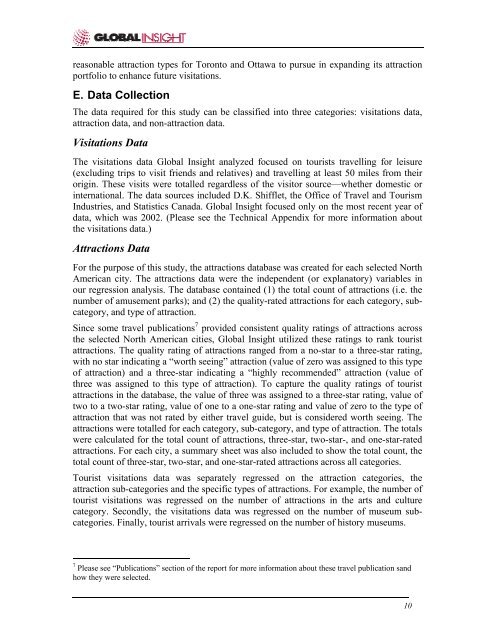
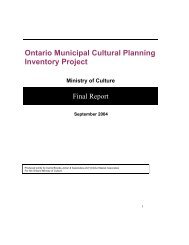
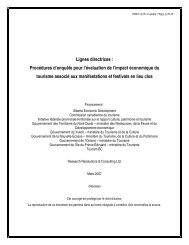
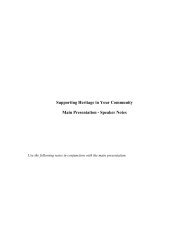
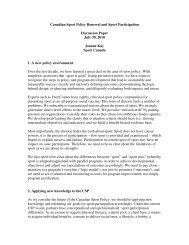
![THIS AGREEMENT made this [date], between [name of owner] (the ...](https://img.yumpu.com/49827605/1/158x260/this-agreement-made-this-date-between-name-of-owner-the-.jpg?quality=85)

